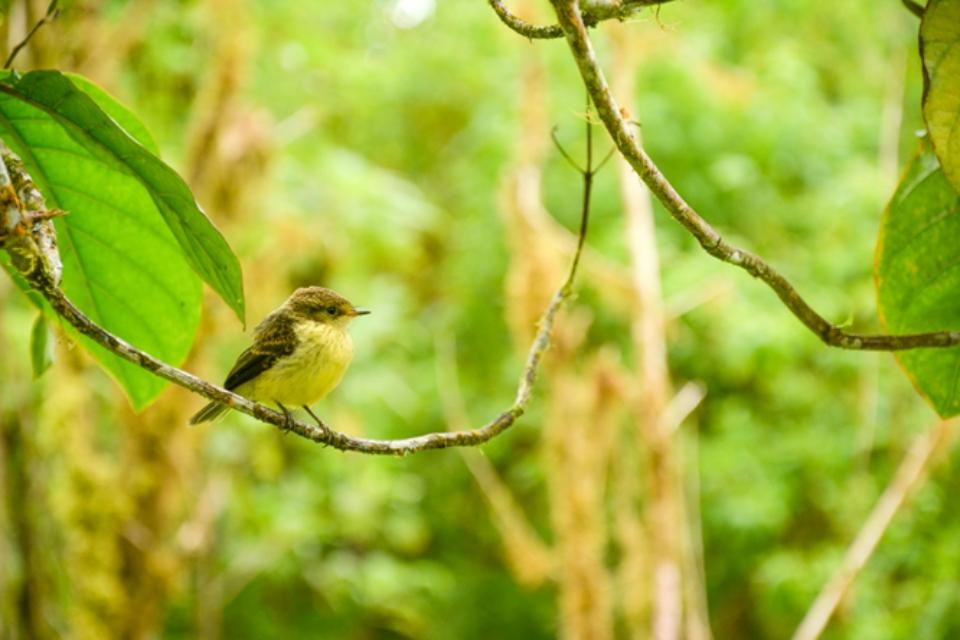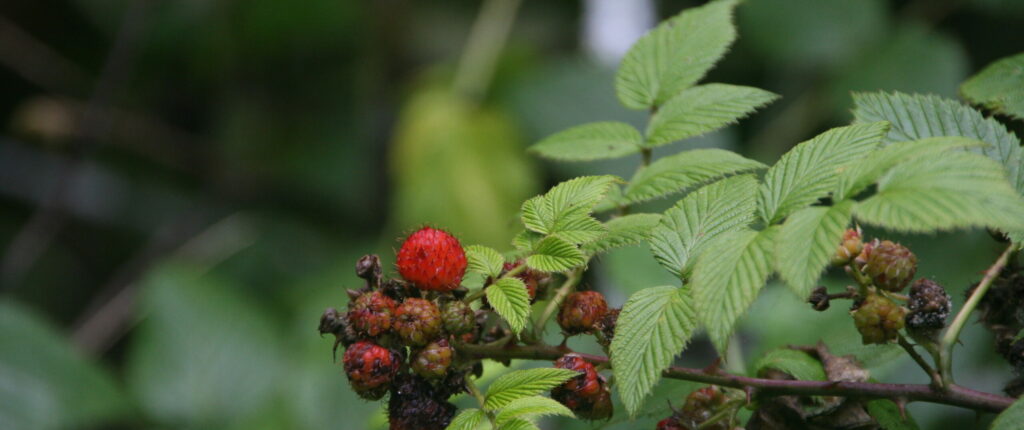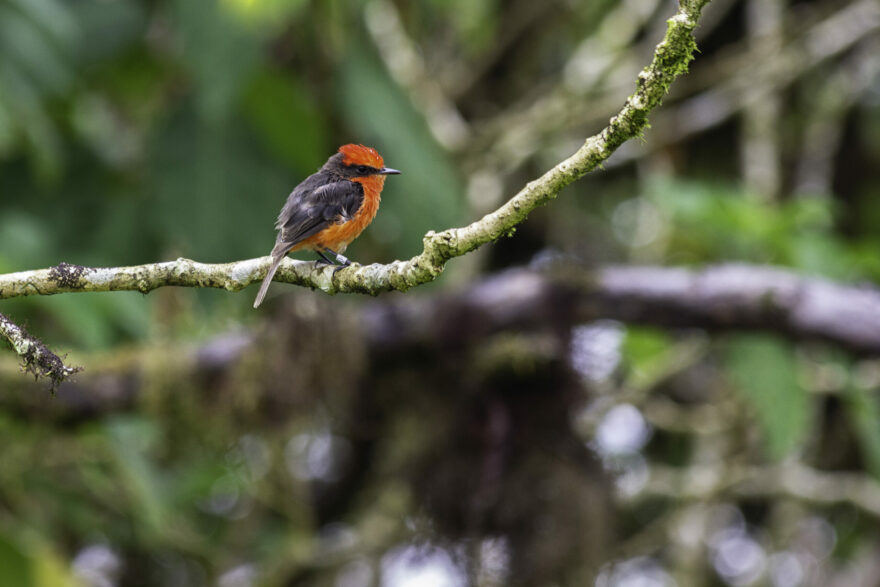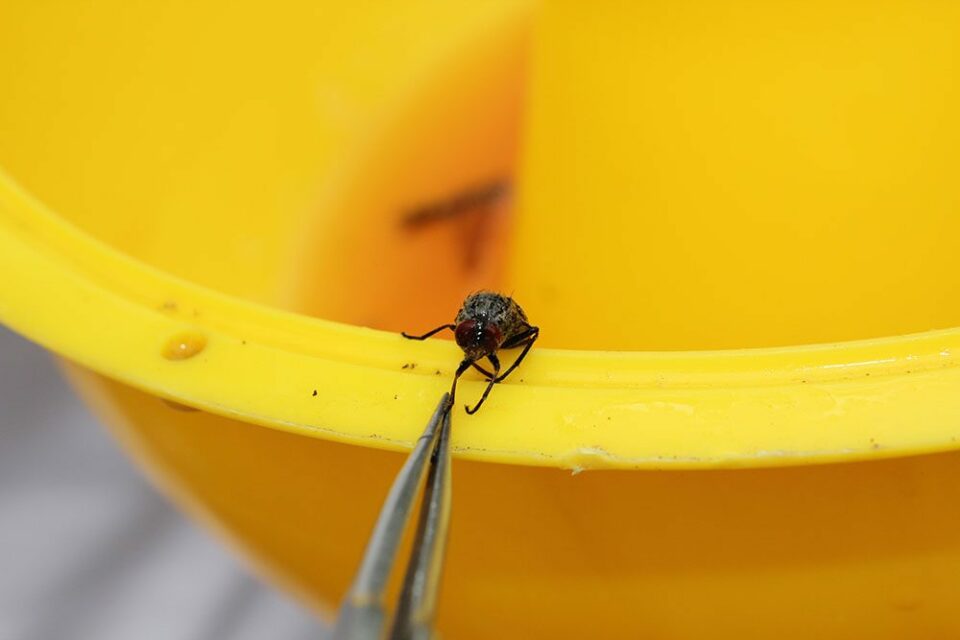
Common name:
Hill raspberry / Mysore raspberry / Ceylon raspberry
Scientific name:
Rubus niveus
Spanish name:
Mora
Conservation status:
Least Concern
Average size:
1.5 - 2 metres
Maximum size:
5 metres
Overview
Rubus niveus is a shrub native to southern and eastern Asia, and was first introduced to Galapagos for its edible fruit in 1968. It can now be found on the islands of Santa Cruz, San Cristobal, Isabela, Floreana and Santiago. In places, dense spiny thickets grow up to three metres tall, turning agricultural areas into wasteland and preventing the unique native forest, dominated by the endemic daisy tree (Scalesia), from regenerating. The dense stands of vegetation have also been found to be preventing birds such as the little vermilion flycatcher from foraging on the ground for food such as caterpillars and spiders.
Controlling the hill raspberry is a tricky business, entailing, at present, a mixture of manual labour and herbicide application. But the plant’s fast growth and large seedbank make these methods expensive, labour intensive and, ultimately, not very successful. Herbicide and manual control may also be indirectly affecting the habitats of local wildlife, including the nesting success of local birds.

Conservation actions
Scientists from the Centre for Agriculture and Biosciences International, together with the Galapagos National Park Directorate (GNPD) and the Charles Darwin Foundation, are investigating ways of controlling hill raspberry using a method known as classical biological control, or biocontrol.
This method is used worldwide in the battle against non-native invasive species, such as weeds. It uses living organisms – the natural enemies of the invasive species such as insects and diseases – found in the invasive species’ native habitat. A biological control ‘agent’ is selected, which only attacks the invasive or target species, weakening it and reducing its impact.
A successful biological control agent will keep the hill raspberry in check at all the sites where it’s present and, most importantly, significantly reduce the costs of controlling it. Biocontrol not only lessens the cost of management for farmers and the GNPD, but also allows the recovery of native vegetation and its associated wildlife, as well as the subsequent release of agricultural areas so that cultivation can be resumed.
At present, CABI scientists are searching for potential biocontrol agents – like a rust fungus – from the plant’s native range of China and India, as well as defining more precisely the origin of the plants that were introduced to Galapagos using genetic markers. If a suitable agent is found, additional funding will enable rigorous testing over a three- to five- year period to ensure that the biocontrol agent for hill raspberry poses no risk to native species, as well as cultivated relations of the hill raspberry like the commercial Andean blackberry on mainland Ecuador, and ornamental roses grown for export.
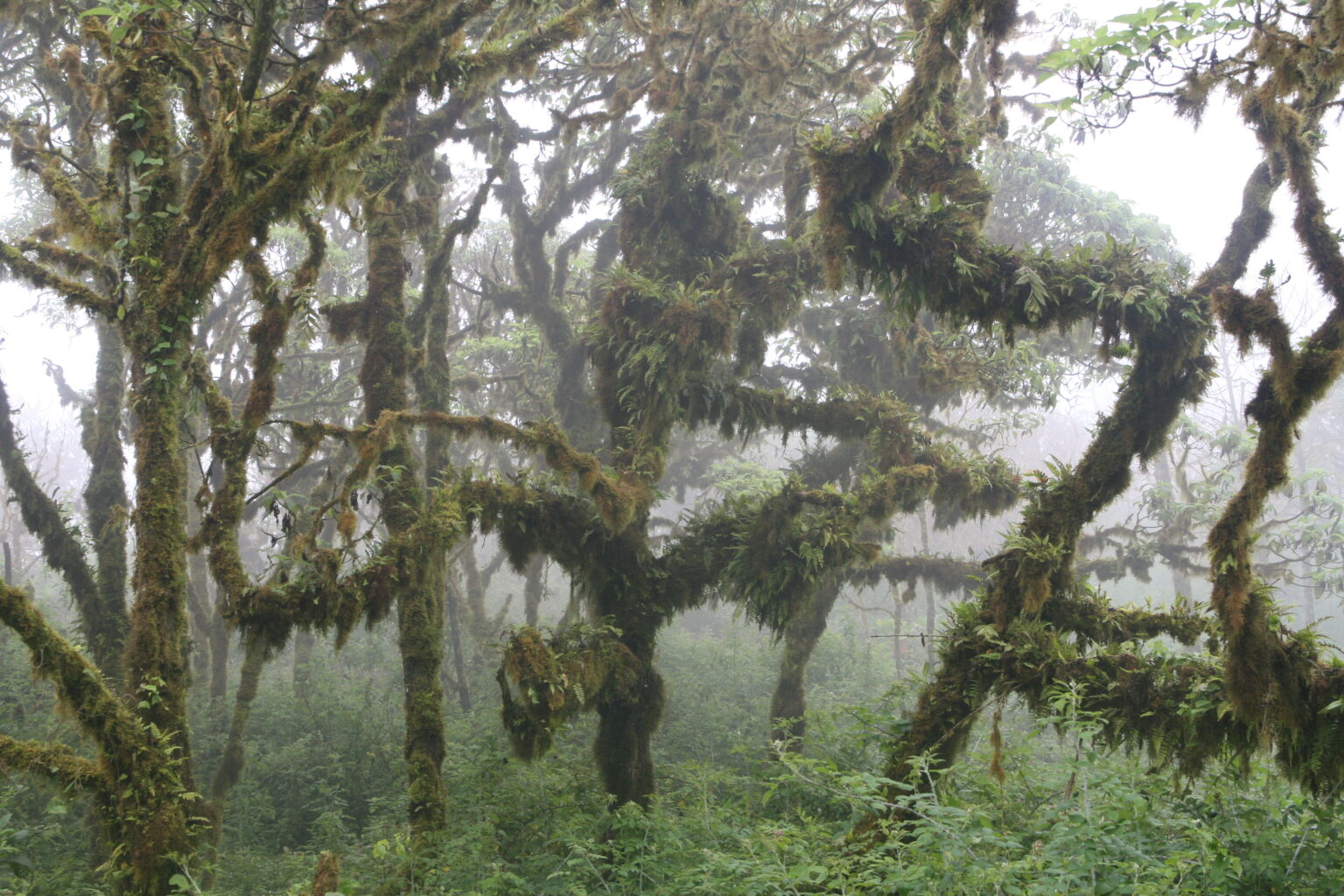
Read more about hill raspberry...


Rewilding Galapagos: Giving nature a helping hand
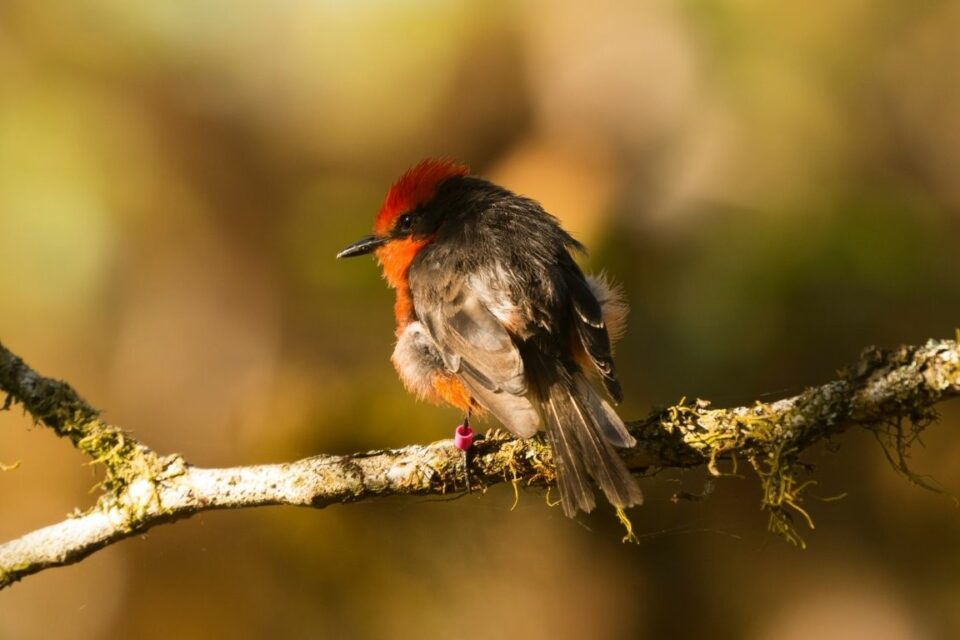
Protecting the Birds of Galapagos webinar 2022
